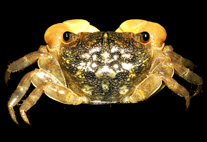Abstract
The final larval stadium of Heteragrion majus Selys, 1886 and H. atrolineatum Donnelly, 1992 are described and illus-trated for the first time, using reared material from Costa Rica, and compared with other species of the genus known from the country. All species were very similar as larvae, but they can be separated by the presence and distribution of antennal setae, spines on the posterior margin of the abdominal segments, and size. A key to separate all five species known for Costa Rica is provided.
References
Corbet, P.S. (1953) A terminology for the labium of larval Odonata. The Entomologist, 86, 191–196.
De Marmels, J. (2004) Heteragrion makiritare sp. nov., with descriptions of hitherto unknown females and larvae of other species from Venezuela (Odonata: Megapodagrionidae, Lestidae). International Journal of Odonatology, 7, 439–458. http://dx.doi.org/10.1080/13887890.2004.9748230
Garrison, R.W., Von Ellenrieder, N. & Louton, J.A. (2010) Damselfly genera of the New World: An illustrated and annotated key to the Zygoptera. Maryland, The Johns Hopkins University Press.
Novelo-Gutiérrez, R. (1987) Las náyades de Heteragrion albifrons, H. alienum, y H. tricellulare (Odonata: Megapodagrionidae); su descripción y hábitos. Folia Entomologica Mexicana, 73, 11–22.
Ramírez, A. (1992) Description and natural history of Costa Rican dragonfly larvae. I: Heteragrion erythrogastrum Selys, 1886 (Zygoptera: Megapodagrionidae). Odonatologica, 21, 361–365.
Snodgrass, R.E. (1954) The dragonfly larva. Smithsonian Miscellaneous Collections, 123, 1–38.
Watson, M.C. (1956) The utilization of mandibular armature in taxonomic studies of anisopterous nymphs. Transactions of the American Entomological Society, 81, 155–202.

